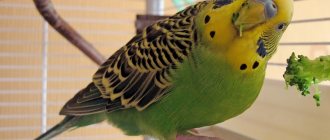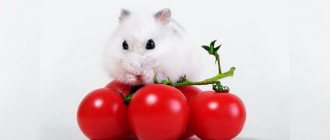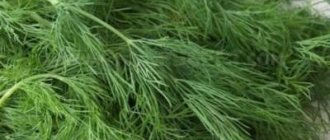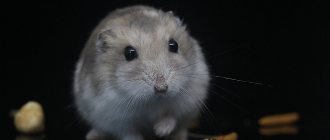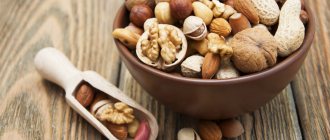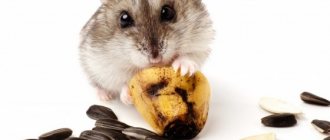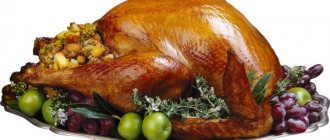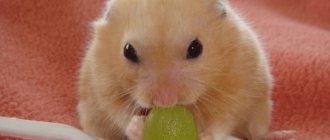What kind of cabbage can I give?
Raw cabbage
Based on the properties of this vegetable, many experts have come to the conclusion that it is the most suitable for feeding hamsters. The body of these animals needs ascorbic acid, and raw white cabbage can replace it.
Therefore, it must be included in your pet’s diet.
Brussels
This type is enriched with vegetable protein, a complex of essential vitamins and valuable nutrients. All of them are useful for the rodent’s body, regulate its vital functions and are easily digestible.
IMPORTANT! It should absolutely not be given to pregnant females or those with sensitive stomachs. It causes premature birth in pregnant women, and is contraindicated for pregnant women, as it has a laxative effect.
Can hamsters eat Chinese cabbage?
This type is recommended due to its high moisture content. It cleanses the intestines of toxins and enriches the hamster’s body with essential minerals.
In addition, Chinese cabbage can be safely given raw.
Can hamsters eat red cabbage?
ATTENTION! This species is strictly prohibited for the diet of hamsters.
Red cabbage leads to serious consequences in the pet’s body:
- bloating;
- creates a serious burden on the stomach and intestines;
- disrupts the functioning of the gastrointestinal tract;
- causes pathologies that lead to the death of the animal.
Can a hamster eat broccoli?
The benefits of this product are high both for the human body and for the body of small rodents. All this is due to the high content of vitamins A, B, C, D, K.
Broccoli is an excellent product for increasing the animal’s immunity, as well as the best solution to the problem of obesity.
Thanks to its high content of vitamins and fiber, broccoli is the favorite vegetable of rodents. It is worth noting that all parts of the plant have nutritional value.
REFERENCE! It is best to give in the autumn.
Can hamsters eat cauliflower?
It is rich in vitamin C and improves the animal's immunity.
It can be safely introduced into a rodent’s diet. Useful both fresh and lightly boiled. Do you give your hamsters broccoli?
What can you give hamsters from homemade food?
Hamsters can be given apples, but too much can cause stomach upset or diarrhea. Dwarf hamsters prone to diabetes should be fed apples sparingly and only as an occasional treat. Never feed your hamster apple seeds as they contain poison.
Hamsters love to save and store their food, so you can give your hamster a large piece of apple and see how much he eats and whether he saves it.
https://www.youtube.com/watch?v=h9OiWJAaZ2c
Although bread is a regular part of the human diet, it is important to know whether it can be given to pet hamsters. Important! Bread soaked in milk can be given to cubs that are not gaining weight well, aging individuals, hamsters that are recovering from illness, as well as pregnant females
Important! Bread soaked in milk can be given to cubs that are not gaining weight well, aging individuals, hamsters that are recovering from illness, as well as pregnant females
White
Since flour contains starch, which is a heavy carbohydrate, eating white bread by rodents can lead to bloating and fermentation in their stomach, as well as metabolic problems and permanent digestive disorders.
In addition, the appearance of such pathologies is inevitable:
- kidney necrosis;
- pancreas pathology;
- problems with the thyroid gland.
Another dangerous component of white bread is yeast, which leads to increased gas formation and even alcoholic intoxication as a result of its fermentation.
- flatulence;
- complete refusal of food;
- diarrhea;
- heart diseases;
- loss of orientation in space.
Bread is a source of large amounts of carbohydrates, its consumption will lead to obesity, to which hamsters are already prone. And as you know, excess weight negatively affects bones, joints and even the heart.
Did you know? The word "hamster" comes from the Avestan language and means "an enemy who throws to the ground." This name comes from the fact that these rodents bend the stems of plants to get to their seeds.
Black
The components that make up black bread are the following: rye flour, yeast and water. Despite the fact that such flour is beneficial for humans, it is harmful for hamsters. As already written above, starch is harmful to animals, but in black bread, even in small quantities, it is still present.
In addition to indigestion, frequent consumption of black bread can lead to stomach diseases such as:
- ulcer;
- gastritis;
- chronic colitis;
- heartburn.
Besides,
- problems with stool;
- bloating;
- changes in behavior.
The yeast contained in black bread leads to the appearance of a fermentation process in the intestines.
Dried (crackers)
All this does not apply to store-bought crackers, which contain flavorings and other substances harmful to the body that can harm the hamster, causing heart, kidney, intestinal and stomach diseases.
Important! To feed hamsters, you can only use dried, but not toasted, crackers. In the burnt crust, carcinogens are formed, which tend to accumulate in the body and release toxins that poison the animal
Bread
It is not recommended to add crispbread as an additive to a balanced diet for hamsters. Despite their low calorie content and completely dietary composition, they contain sugar and salt. As a result, the following problems may occur:
- diabetes;
- kidney and liver problems;
- stomach irritation;
- dry fibers can hurt your mouth.
From what people eat, fluffy can be fed porridge boiled in water without salt and sugar. Millet, buckwheat and other cereals are suitable. Rice is not recommended. You can give him low-fat cottage cheese and boiled eggs. Canned food – only baby vegetable purees without salt, sugar or preservatives.
In what proportions can cabbage be given to hamsters without harm to the pet?
All types of cabbage are digested differently in the body of rodents. Therefore, the proportions acceptable for feeding are also different. In addition, the breed of hamster also affects the amount of cabbage in the diet.
For example, white cabbage can be given no more than 50 grams per day. This dosage is suitable for Syrian hamsters. But for dwarf breeds or Djungarian hamsters, 25 grams will be enough. At the same time, all breeds of hamsters should be given such cabbage no more than 2-3 times a week.
Brussels sprouts and cauliflower are given to all breeds in the amount of 50 grams 2 times a week. Cauliflower can be given raw and slightly boiled. Brussels sprouts are given fresh from August to December.
Animals love Chinese salad or Chinese cabbage very much, but it is important not to harm the body and give it in reasonable quantities.
About the species of the cabbage family
In color there is a high concentration of vitamins B and C, macro- and microelements. By including it in your hamster’s diet, you can easily replenish vitamin reserves.
It is important to remember that raw cabbage of some varieties is not suitable for hamsters. It had to be boiled, because fresh it can harm the gastrointestinal tract
Don’t forget: the daily intake of any cabbage variety is no more than 50 g per day.
Chinese salad fills the body with useful microelements and vitamins and is characterized by a high water content, helping to cleanse the intestinal environment of toxins. Hamsters love it very much, and the owner, if fed with a salad variety, will not have to worry about the harmful consequences of a snack. But it’s worth observing moderation, because rodents are voracious creatures and can easily eat too much. It is impossible to compose a daily diet exclusively from cabbage leaves, even if the patient has gained excess weight. The diet should be varied, and in case of a fasting day, it is better for hamsters to replace cabbage with straw. In any case, the pet will be satisfied, and at the same time he will be able to lose a little weight.
The cabbage variety is one of the most frequent guests in the refrigerator of a modern person who cares about his health. Often, the owner of a hamster does not suspect that this particular variety can be destructive for the hamster, and feeds it daily, or even feeds it with cabbage leaves. How justified is this and is it possible for hamsters to abuse their owner’s generosity? The cabbage variety is known for its high fiber content, which has the ability to absorb cholesterol and remove it from the body, preventing it from being absorbed into the blood cells. The action is possible due to incomplete breakdown of the substance in the stomach. White cabbage can fill the stomach very quickly, leading to a feeling of fullness.
At first glance, these are very beneficial aspects for your pet’s health: it won’t suffer from excess cholesterol, and it will quickly satisfy hunger. But is it possible for Djungarian or ordinary rodents to feast on this variety in company with their owner?
Categorical - no. Because fiber is only beneficial for the human body. It also has a significant contraindication for it: increased formation of gases, leading to flatulence and digestive problems. But if a person, with moderate consumption of cabbage, can easily cope with the problem, then for a hamster, gas formation and bloating of the intestines are often fatal. Especially if the owner is too keen on throwing crunchy “delicacies” into the cage.
Brussels and red cabbage varieties are on the same level as the white cabbage variety. It is highly not recommended for a hamster to eat cabbage of the named types.
Features of feeding cabbage for different breeds
All hamsters can include cabbage in their diet. The exception is red cabbage, as already mentioned. The main rule is the permissible dosage of the product. But this does not mean that cabbage should become one of the rodent’s staple foods. In addition to it, the diet of any breed of hamster should include other products. Let's look at the diet of hamsters of different breeds.
Syrian
The diet of this breed of hamster should include:
- cereal grains;
- juicy food (greens, vegetables);
- protein products (insects, worms).
Cabbage is also a succulent food. The following types are acceptable: cabbage, Brussels sprouts, Beijing sprouts, broccoli. Cabbage can be fresh or boiled. Give it no more than 3 times a week in moderate quantities.
In addition to cabbage, the following vegetables are acceptable in the diet of a Syrian baby:
- carrot;
- cucumber;
- Bell pepper;
- pumpkin pulp;
- zucchini;
- radish;
- turnip;
- beet.
To provide your pet with the necessary seeds, it is best to buy ready-made mixtures that contain:
- wheat;
- corn;
- oats;
- buckwheat;
- peanut;
- split peas;
- sesame.
Pumpkin, melon and watermelon seeds are also suitable for nutrition.
The best fresh green food would be: clover, wheatgrass, knotweed, burdock, plantain, parsley, dill.
An excellent food would be branches of trees such as apple, pear, cherry, birch, beech, oak, poplar, willow, and ash.
Dzungarian
This breed of hamster is prone to obesity. Therefore, the best type of cabbage for him is broccoli. You can give it every other day, but in very small quantities. The product can be served fresh or boiled. Other varieties of cabbage can cause gas formation, which can cause the animal to die in a matter of hours.
The diet of this breed should include:
- dry food (mixture of grains);
- succulent food;
- protein food (dietary meat, eggs, insects);
- vitamin supplements;
- mineral stones and branches of fruit trees.
Cereals: corn, wheat, oats, rye, barley, lentils, rice, buckwheat, etc.
Seeds and nuts: cashew, pumpkin, flax, sesame, hazelnut, walnut, etc.
Vegetables: eggplant, broccoli, beets, radishes, turnips, zucchini, carrots, etc.
Fruits: pear, banana, apples.
Roborovsky's hamster
Their diet consists of:
- grain mixture;
- vegetables and fruits;
- greenery;
- sprouted wheat;
- millet
In addition, protein foods are needed: cottage cheese, eggs, fish, porridge, worms.
Hamsters of this breed eat the same way as others. The only thing is that due to the fact that they have a small body weight of 26 grams, the portions of food for them will be significantly smaller than for other hamsters.
It is worth remembering foods that are strictly prohibited for this breed:
- almond,
- persimmon;
- semi-finished products;
- food from a person's table;
- fruit seeds and pits;
- tomatoes.
IMPORTANT! This breed is not allowed cabbage. It is a difficult product for their digestion.
How to give water to a dzhungarik
Water is necessary for the full life of any organism, and the Djungarians are no exception (even though they originally lived in dry steppes and deserts). The fluid that your hamster gets from vegetables and fruits is sometimes not enough.
Especially in hot weather, he may experience extreme thirst. For drinking, it is better to purchase a drip drinker, so your pet will have round-the-clock access to liquid. It is better to take purified water, as boiled water or just from a tap can be too hard.
With a balanced diet, the hamster does not require additional vitamins. But if you feed your pet with ready-made food, and not of the highest quality, then a shortage is quite possible. You can solve this problem by purchasing supplements at a pet store.
They are sold in two types:
- liquid (convenient to drip into the drinking bowl);
- hard (gnaws on its own).
If your hamster ignores solid vitamins, you can outwit him by crumbling them into the grain mixture. Remember that rodents have fast metabolisms but are small in size. It can be dangerous for them to eat what a larger animal eats. Be attentive to your hamster's diet, and he will delight you for a long time.
A balanced diet is the key to health
Excellent health, healthy activity and charming appearance will provide the hamster with a healthy diet that fully meets the needs of the little creature. Unfortunately, a very high mortality rate among them occurs due to dietary errors that provoke dangerous diseases of the gastrointestinal tract.
For full growth and ability to reproduce, simple and Djungarian hamsters need a diet consisting of a sufficient amount of protein and carbohydrate compounds, fats, vitamins and microelements. It is important to maintain proportions in nutrition, since a rare rodent will refuse an additional snack, which can lead to excessively plump cheeks, and in extreme cases can lead to obesity. In addition, rodents often suffer from indigestion due to overeating, as a result of which metabolic processes are disrupted.
Vitamin C will help ensure healthy digestion for an adult pet, but provided that it does not exceed 0.5 mg of vitamin per 20 g of body weight. Exceeding levels of ascorbic acid in the body does not pose a danger, provided it is saturated with it from various sources. If the owner often invites the pet to chew cabbage leaves, trying to replenish ascorbic acid reserves, there will be little benefit from this, and more than enough harm. This begs the question: is it possible to give cabbage to a rodent?
Who can and cannot eat vegetables?
- Hamsters. It is strictly forbidden to give Syrian hamsters white cabbage and Brussels sprouts. Other types can be given, but in small quantities. In particular, you should refrain from feeding hamsters with fresh culture. It's better to keep it steam for a while. Then the useful components will remain, and all the acids will go away. It is because of the acids that hamsters cannot eat this vegetable fresh. Is it possible for hamsters? Djungarian hamsters should also not be given raw cabbage. It is recommended to give them Chinese cabbage and cauliflower. Help! Raw cabbage contains beneficial substances and vitamins that animals need to be healthy, active and cheerful. But, you should not give hamsters white, red and Brussels sprouts.
- Rabbits. Although these pets love cabbage, it can be dangerous for them in large quantities. And can cause stomach problems. The most dangerous of all types is cabbage: the juicier its leaves, the worse it is for rabbits. The stalk is the most harmful. You can feed decorative rabbits with the upper, slightly wilted leaves. In small quantities. Perhaps, occasionally, feed your pets broccoli and cauliflower. But, of course, do not abuse it.
- Chinchilla. Any type of cabbage is contraindicated for chinchillas. After all, it can cause gastrointestinal diseases. And if given, then in very limited quantities. Moreover, if signs of illness occur, it is necessary to completely eliminate cabbage from the animal’s diet. And show your pet to the veterinarian.
- Parrot. Cabbage is an excellent food for birds. It contains a large number of useful microelements. This is one of the main food for budgies in winter. This culture must be given raw. Only leaves are given whole. The stalk is finely chopped or grated, after which it is given to the birds in small doses.
- To the dog. Is it possible to give cabbage to dogs in general and Yorkshire terriers in particular? The culture is recommended for the Yorkie's diet. It is served stewed or boiled. Sometimes you can give it raw. But only cabbage leaves. This helps strengthen teeth. In this case, absolutely any cabbage is recommended. A healthy dog that has not been restricted in its diet by a veterinarian can and should eat cabbage. This vegetable is a source of slow carbohydrates that help in the digestion of meat. But it should be introduced into the diet carefully and in small portions. If no problems arise and the dog liked the treat, then you can give fresh cabbage in small quantities.
- To cats. You can give any cabbage in small doses. At the same time, not every cat will eat it. Cats are like people, each with their own preferences. Some cats will refuse to consume it - then you should abandon the idea of giving them this vegetable crop. Sometimes you can give it stewed or boiled. Fresh is not to everyone's taste.
- Kuram. It is beneficial to feed laying hens fresh cabbage of any kind. This is especially useful in autumn and winter, when there is no fresh, juicy grass. And they simply need it. How to give it to broiler chickens? Broilers are given cabbage from the fifth day. Before giving, it is added to the mash in small portions.
- Rats. Any cabbage is contraindicated, as it can cause increased gas formation. Which can cause, with further consumption, more serious health problems. And this is despite the fact that rats happily crunch this vegetable if they get it. The only exception is that boiled or stewed cabbage contains fewer substances that irritate the intestines, and in this form the vegetable can be consumed by rats, but in very limited quantities.
- To snails. Snails can be fed with cauliflower and Chinese cabbage, including Achatina. Including cabbage leaves. But crushed and in small portions. Since the stomach may not be able to digest whole leaves, and large doses may cause complications. It is necessary to be careful when giving this vegetable unripe, as it contains an excessive amount of pectin.
- Turtles. Cabbage and cauliflower leaves are not often given, but they must be present in the diet of a land turtle. Cabbage leaves are also suitable for an adult aquatic turtle. No frills and not every day. Only when she needs it, in connection with the love of moisture. Oddly enough, turtles can eat a lot of this vegetable, but since there is a high risk of increased gas formation, you should not allow your pet to eat cabbage a lot and often. You can feed your turtle only fresh cabbage. Under no circumstances should you fry, stew or cook.
- Horses. In a horse, cabbage can cause fermentation in the stomach, which leads to colic. You should never feed it cauliflower or white cabbage. But you can give broccoli periodically. It is important to understand that processed vegetables (stewed or boiled) have a lesser effect of fermentation in the intestines, so a small amount of it is acceptable.
We invite you to familiarize yourself with 10 animals of the rainforest
